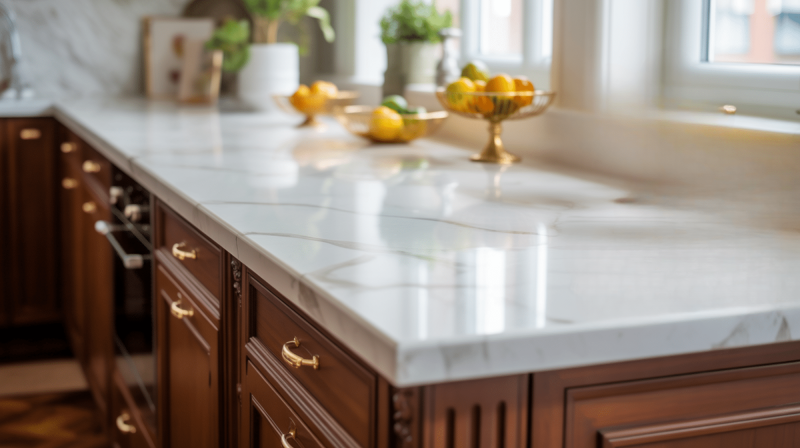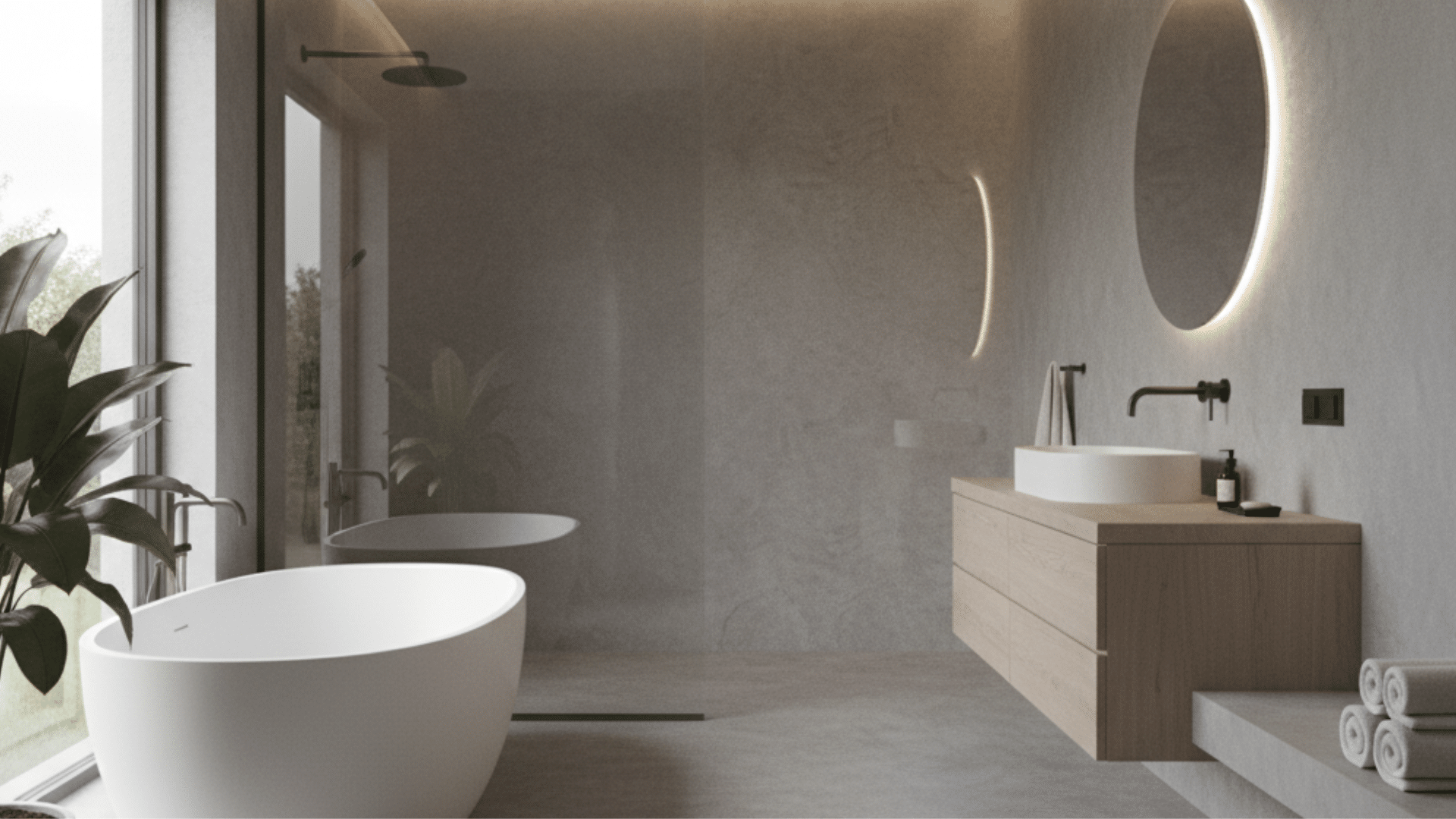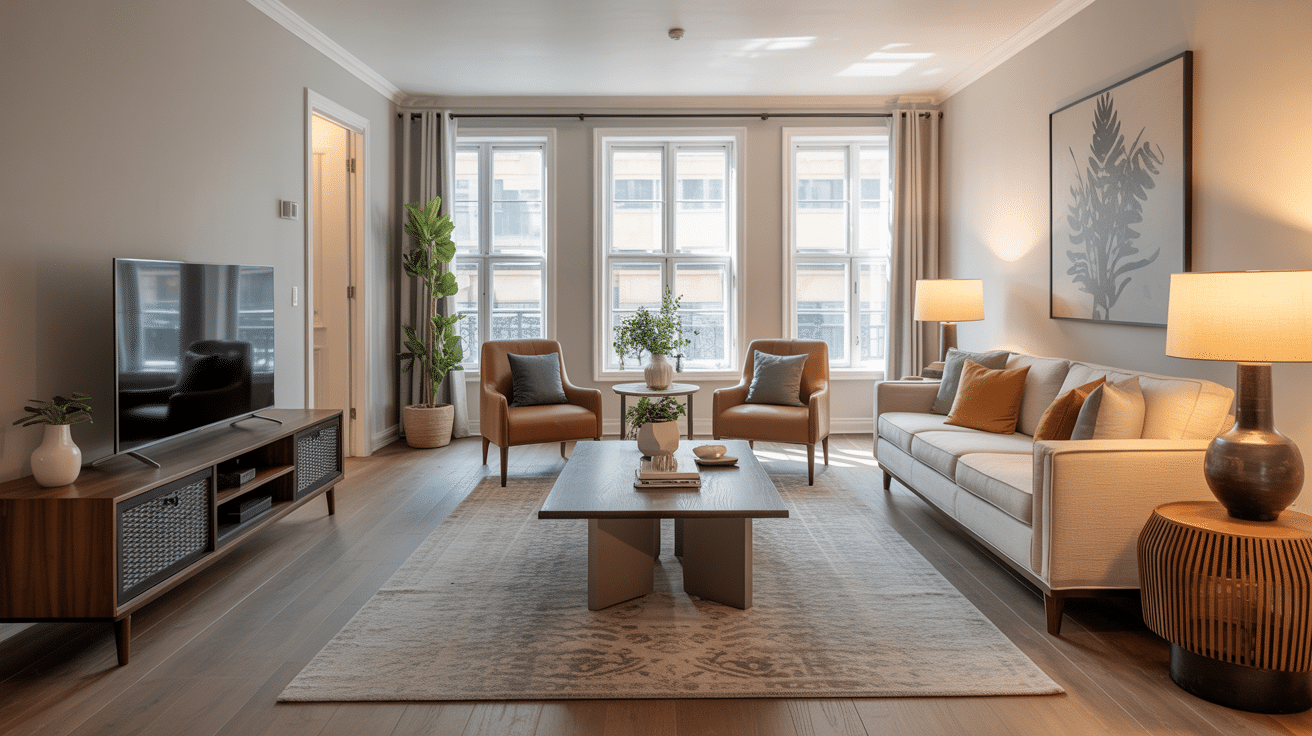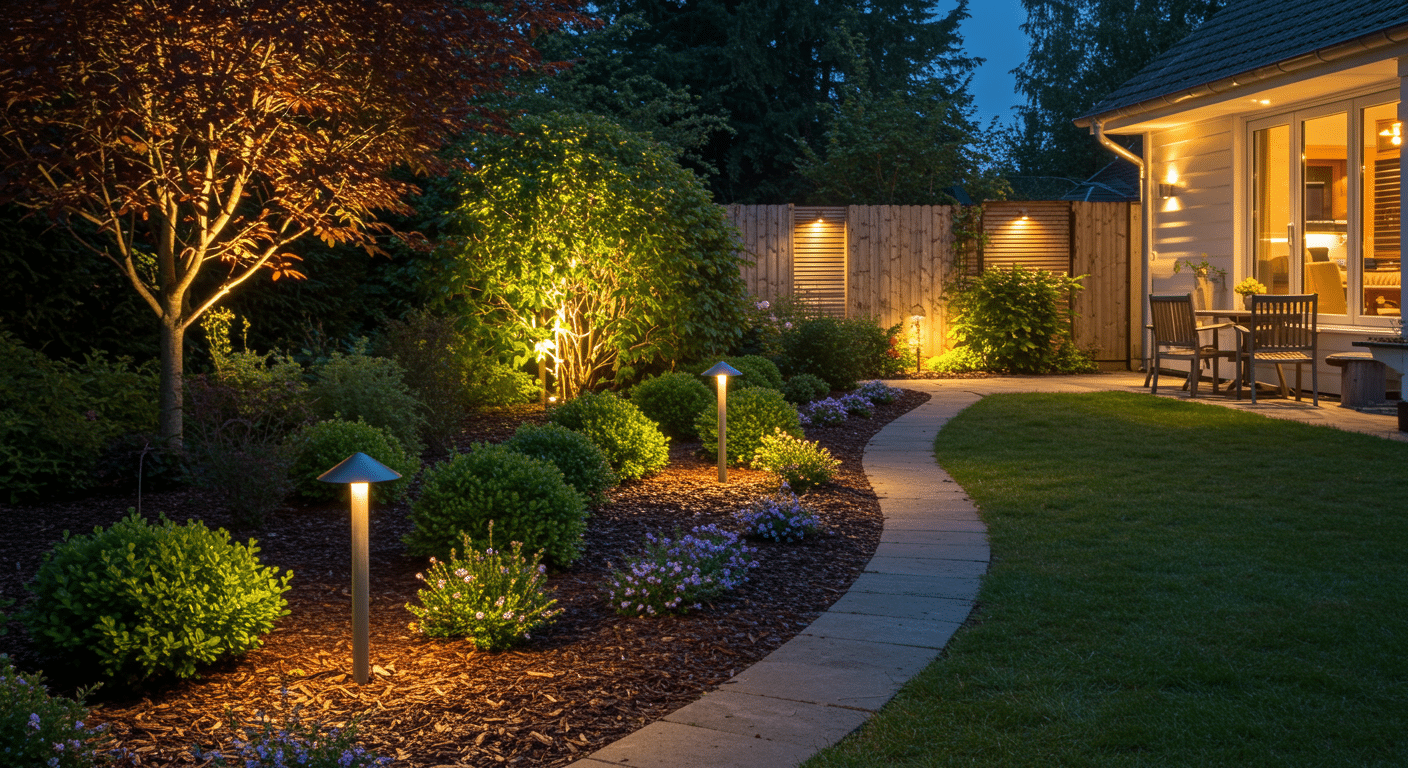Picking the wrong countertop thickness can cost you thousands in costly renovation mistakes. Most homeowners assume all countertops are the same thickness, but that’s simply not true at all.
I’ve seen too many people end up with wobbly surfaces because they didn’t know the standard measurements beforehand.
Understanding proper countertop thickness will save you money, time, and frustration during your kitchen remodel. Let me show you everything you need to know about getting this exactly right.
What is Standard Countertop Thickness?
I used to think countertop thickness was just about picking a number and moving on. But I learned the hard way that it’s so much more than that.
The right thickness affects how your countertop handles daily wear and tear. It determines whether your surface can support heavy appliances without cracking.
Thickness also impacts the overall look of your kitchen; too thin looks cheap, while too thick can overwhelm smaller spaces.
Most countertops come in three main sizes: 1 cm, 2 cm, and 3 cm.
The standardization happened in the 1990s when manufacturers needed consistent sizing for mass production and installation. Before that, thickness varied wildly from one supplier to another.
Do Thicker Countertops Last Longer?
This is the question I get asked most. The answer isn’t as simple as you’d think.
While thicker slabs can handle more weight and stress, proper installation matters just as much as thickness.
| Thickness | Best For | Pros | Cons |
|---|---|---|---|
| 1 cm | Overlays, backsplashes | Lightweight, cost-effective | Requires support, limited durability |
| 2 cm | Standard installations | Good balance of strength and cost | May need edge support for overhangs |
| 3 cm | Heavy-duty use | Maximum strength, no support needed | Higher cost, heavier installation |
The thickness you choose depends on your specific needs and budget constraints.
Factors That Influence Standard Countertop Thickness
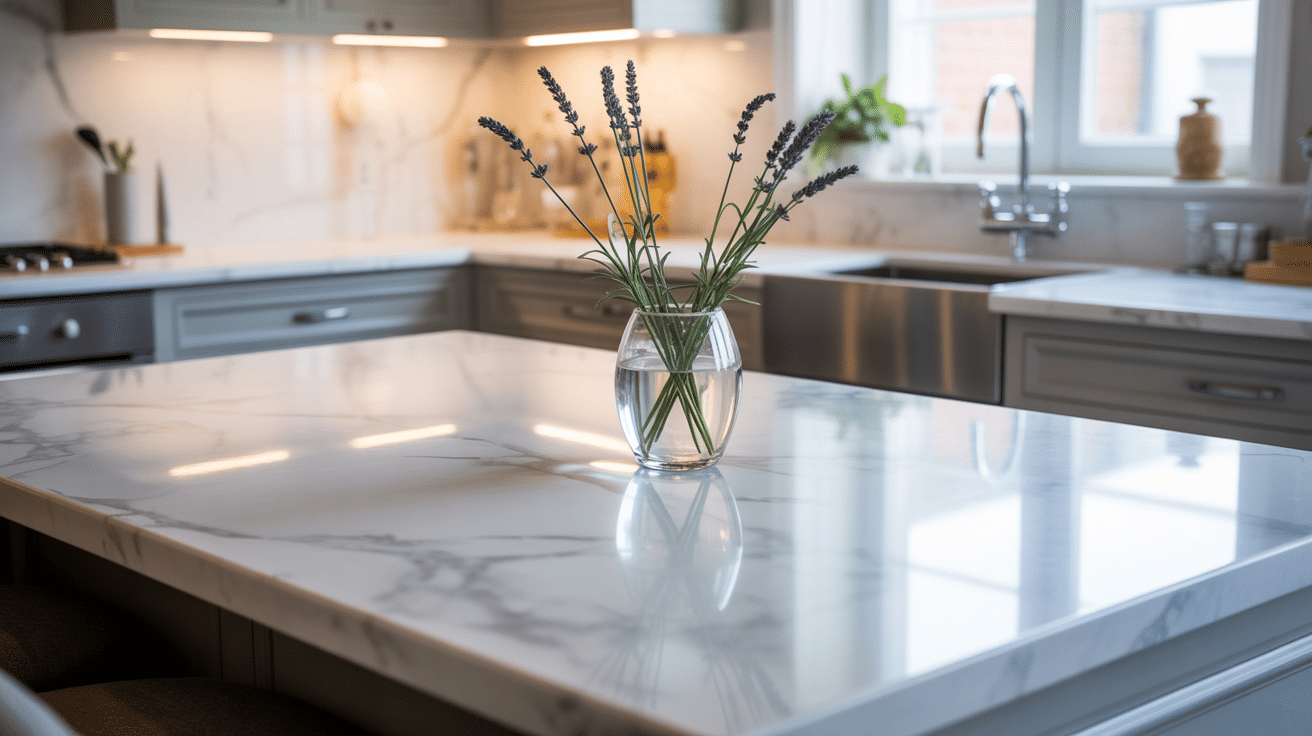
I’ve learned that countertop thickness isn’t a random choice. Several key factors determine what works best for each situation.
Your kitchen size, cabinet strength, material type, and how you use the space all play important roles in getting this decision right.
1. Cabinet Support
Your cabinets do more than hold storage; they also support the weight of the countertop. If the base cabinets are weak or uneven, I usually recommend thicker slabs or added plywood backing to distribute the load safely and prevent future sagging or warping.
2. Span and Overhang Length
Whenever I plan for long spans or extended overhangs, like breakfast bars or island seating. I go thicker. A standard 3 cm slab usually does the trick, but if the overhang exceeds 10–12 inches, I either add extra thickness or reinforce with brackets to avoid any wobble.
3. Edge Profile Options
I’ve noticed that not all edge styles are possible with every thickness. Thicker slabs give me more room to play with beveled, ogee, bullnose, and waterfall, while thinner slabs can restrict me to simpler edge treatments. It’s something I always weigh during the design phase.
Budget Considerations in Natural Stone Countertops
Thicker slabs typically cost more, no surprise there. Between material, fabrication, and edge finishing, going from 2 cm to 3 cm can noticeably increase your project budget.
So if I’m working with limited funds, I might choose a thinner stone and use lamination techniques to fake the thickness visually.
| Natural Stone Material | Standard Thickness | Installation Price Range | Average Cost (Material Only) |
|---|---|---|---|
| Granite | 3 cm (1¼″); sometimes 2 cm or 5–6 cm for waterfall/overhangs | $40–100 / per ft² (commonly $60–100 / ft²) | $35–75 per ft² |
| Marble | 3 cm (1¼″); thinner slabs used for decorative or vanity surfaces | $60–200 per ft² (generally $70–150 / ft²) | $60–120 per ft² ; up to $150–200 / ft² for premium types |
| Quartzite | 3 cm standard; thicker (5–6 cm) sometimes for bold features | $70–250 per ft² installed, depending on rarity and complexity | $60–100 per ft² for common varieties; up to $250+ per ft² for exotic types |
Best Countertop Materials for Different Applications in 2025
When it comes to ‘Material Strength vs. Thickness Requirements, ‘ quartzite is incredibly strong. I’ve seen 2 cm slabs handle heavy kitchen use for decades. Marble, on the other hand, needs that extra thickness for durability. The softer the stone, the thicker it should be.
Material choice completely changes the thickness game. Some materials can handle stress better than others, which means they work fine at thinner profiles
Kitchen Champions
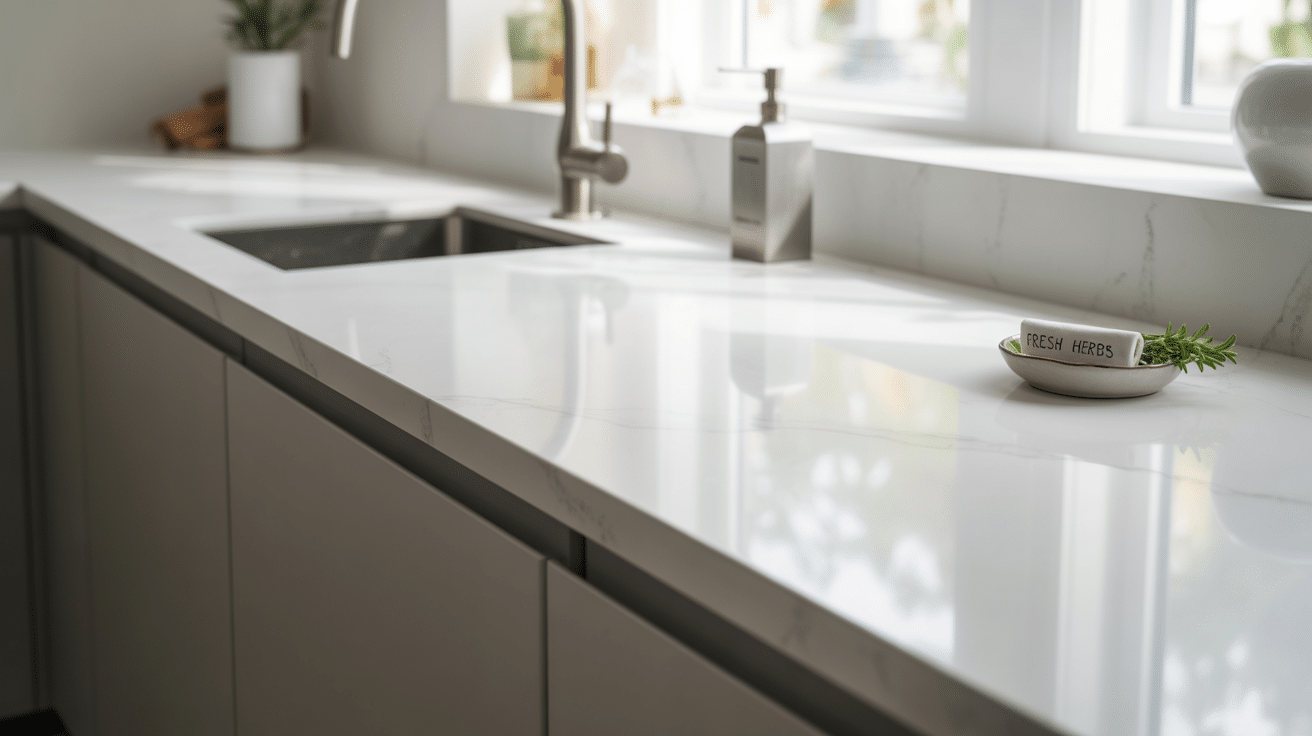
In kitchens, where countertops take a daily beating from cooking, chopping, and spills, a sturdy 3 cm slab is the real hero. It offers strength, seamless installation, and supports bold edge profiles without added backing.
For standout features like waterfall islands or bar seating overhangs, thicker slabs are used, up to 2.5 inches.
Add extra support and design flair. These robust options ensure your kitchen not only functions well but also looks high-end and built to last.
- Granite (2-3 cm): Natural beauty with good strength. Can chip if hit hard enough.
- Quartzite (2 cm works fine): Extremely durable, handles heat well. Higher cost than most options.
Bathroom Winners
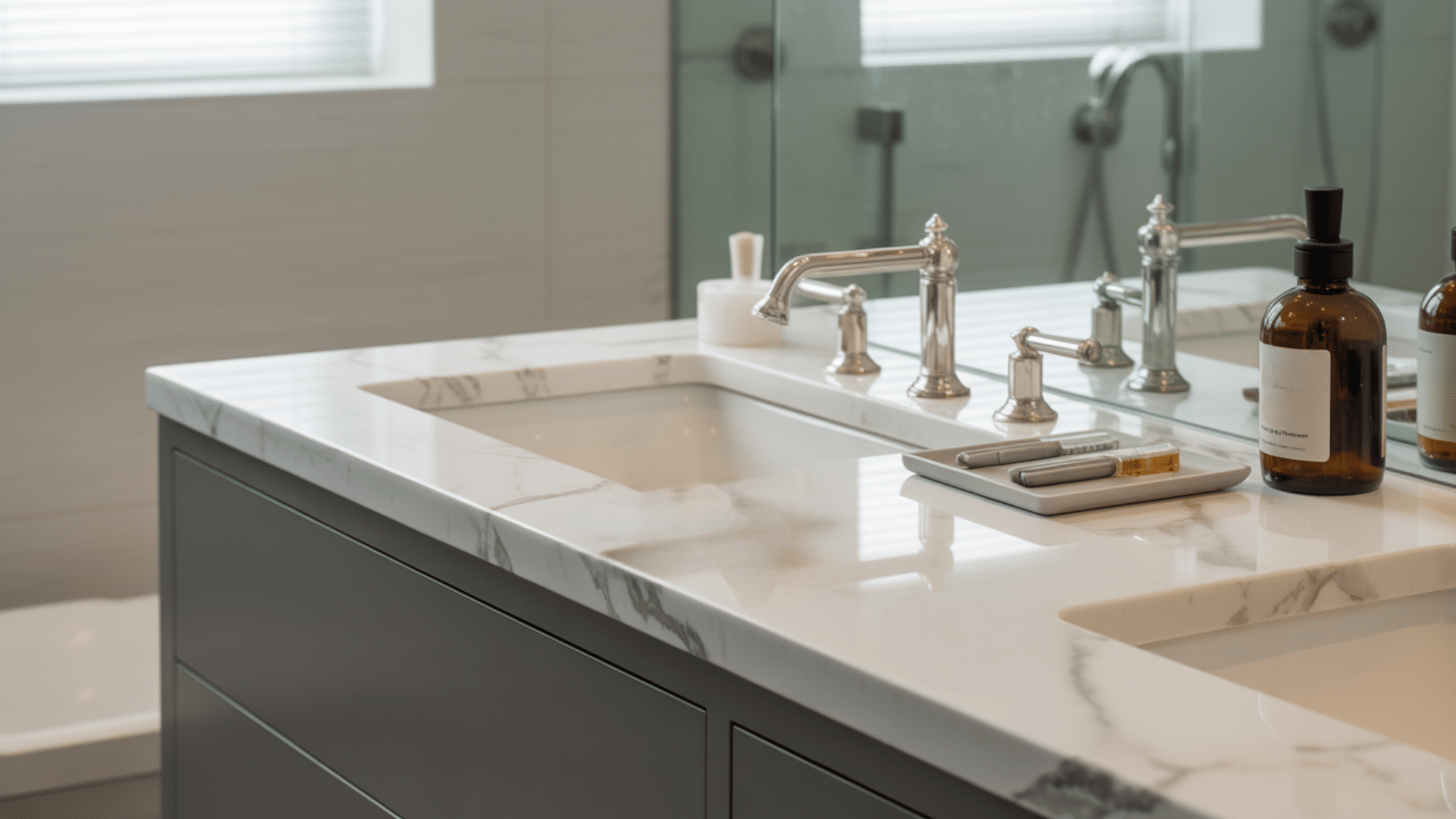
Bathrooms benefit from both standard and slim countertop thicknesses depending on design and use.
A classic 3 cm stone slab gives vanities long-term strength and a polished finish without needing extra support. However, for floating vanities or wall-mounted countertops where aesthetics are prioritized, thinner 1–2 cm slabs with adequate framing work perfectly.
If you are going sleek and minimal or strong and classic, there’s a bathroom countertop thickness that fits just right.
- Marble (3 cm recommended): Classic look but needs sealing. Thicker slabs prevent cracking around sinks.
- Quartz (2 cm sufficient): Water-resistant and low maintenance.
Outdoor Options
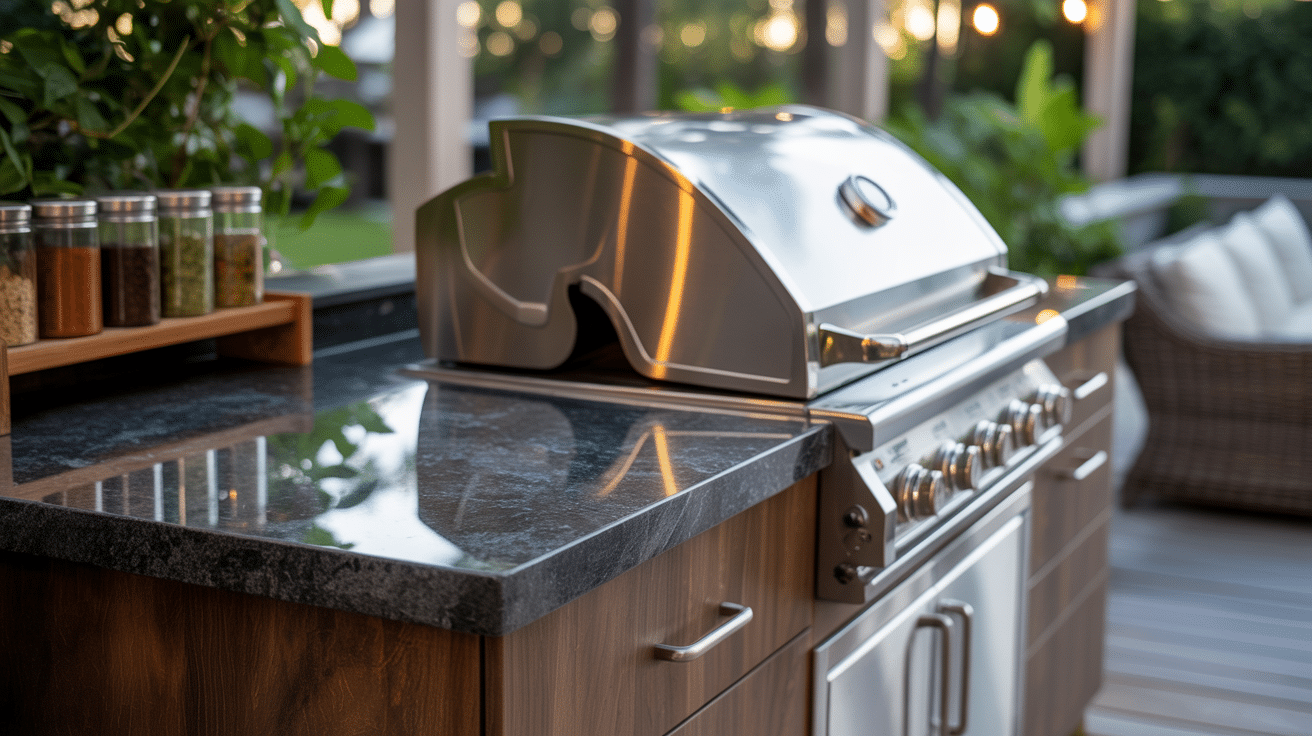
Outdoor kitchens, bars, and grilling stations face changing temperatures, UV exposure, and frequent use. That’s why a thicker, 3 cm slab or even thicker for longer spans is essential for durability and weather resistance.
If you’re going for vertical cladding or decorative backsplashes outdoors, thinner 1–2 cm slabs can work when well-supported.
Ultimately, your outdoor surfaces need to balance strength, style, and practicality, and thicker slabs tend to win in all three.
- Granite (3 cm minimum): Weather-resistant, handles temperature changes.
- Natural Soapstone(1.5-3 cm): nonporous and stain-resistant, and clean-up is easy using household cleaners.
How to Tell If a Countertop is Too Thick (or Too Thin)
I’ve walked into kitchens where the countertop thickness was clearly wrong the moment I saw it. Sometimes it’s obvious: cabinets pulling away from the wall or surfaces that look like they belong in a different house entirely.
I’ve seen people deal with wobbly surfaces for years before calling me to fix what should have been done right the first time. Trust me, catching these problems early saves both money and headaches.
1. Drooping or sagging surfaces – Usually means the slab is too thin for the span. Fix: Add support brackets underneath.
2. Cabinet doors won’t close properly – Thick countertops can interfere with upper cabinet doors. Fix: Adjust hinges or trim the countertop edge.
3. Overhang looks unstable – Thin material extending too far without support. Fix: Install corbels or reduce the overhang.
4. Proportions look off – Massive countertops in tiny kitchens or paper-thin slabs on large islands. Fix: Choose a thickness that matches your space scale.
5. Visible stress cracks – Sign the material can’t handle the load. Fix: Replace with proper thickness and add support.
Takeaway
Choosing the right countertop thickness doesn’t have to be overwhelming. I’ve shown you the standards, materials, and warning signs to watch for.
The truth is, there’s no one-size-fits-all answer; it depends on your style, space, and budget. Homeowners who take time to consider both form and function end up happiest with their choice.
Don’t sacrifice your design dreams for practicality, but don’t ignore practical needs either.
Whether someone chooses 2 cm quartz or 3 cm granite, the key is making an informed decision. Take what you’ve learned here and create a kitchen that works beautifully for years to come.
Frequently Asked Questions
1. Can You Use Thin Countertops in Heavy-Use Areas?
Thin countertops in heavy-use kitchens are risky. You can get away with 1 cm for bathroom vanities or bar tops with light use. But the main kitchen prep areas? I always recommend 2 cm minimum. The repair costs from cracking aren’t worth the initial savings.
2. What Is the Trend in Countertops Thickness?
Thicker countertops are emerging as a standout trend in kitchen design for 2025. These heftier surfaces, usually between 2 to 3 inches thick, are making waves for their bold, eye-catching presence.
3. How Thick Are Most Laminate Countertops?
Laminate countertops traditionally have a thickness of 1.5 inches, while solid surface materials like granite and quartz range between 0.75 to 1.5 inches.
4. Is Quartz Good Against Heat?
Quartz countertops, unlike natural stone, aren’t built to handle direct heat from hot pots or pans. They can typically tolerate temperatures up to around 150°F, but anything beyond that risks causing permanent damage like discoloration or cracking. It’s always safer to use a trivet or heat pad to protect the surface.


